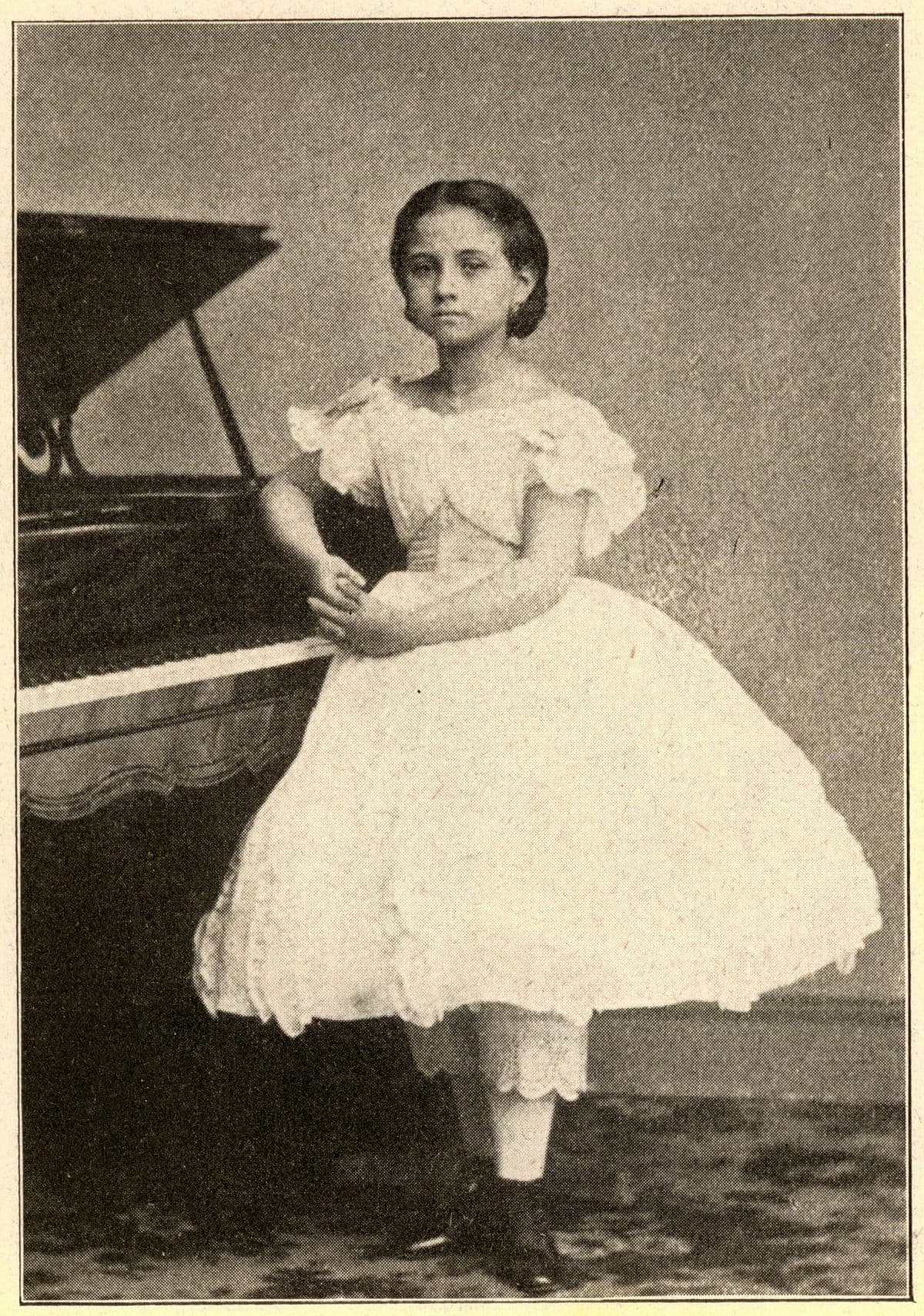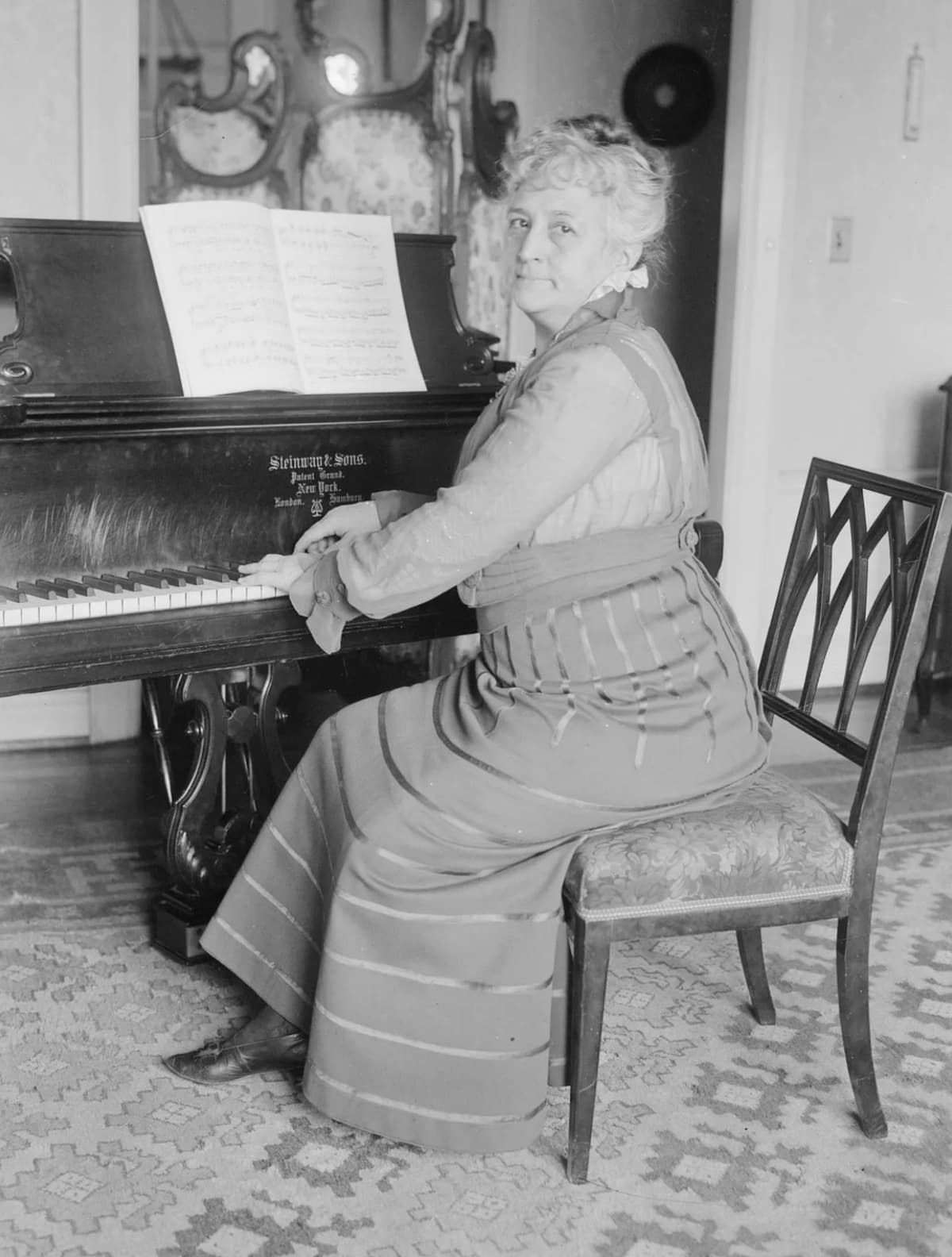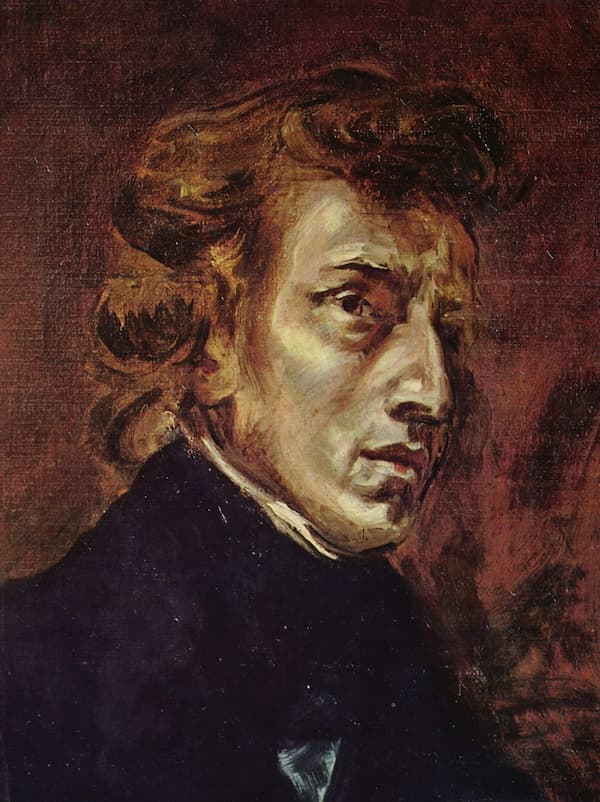Teresa Carreño was one of the most famous pianists of her generation. She traveled the world from Europe to America to Africa to Australia and lived a life full of accomplishment and adventure.
Franz Liszt: Annees de pelerinage, 2nd year, Italy, S161/R10b: No. 5. Sonetto 104 del Petrarca (Sonnet 104 of Petrarch) (Welte-Mignon piano roll recording) (Teresa Carreño, piano)

Teresa Carreño as a young girl
Here are some facts about her life and work to acquaint you with this piano legend:
1. Born María Teresa Carreño García de Sena in December 1853 in Caracas, Venezuela. She was named after her mother’s cousin, the late wife of Simón Bolívar. Her father came from a musical family and was her first teacher, managing her career until he died in the 1870s.
2. In 1862, the family moved to New York City, where the little girl began concertizing both publicly and privately. The family was having financial trouble after her father lost his government job in Venezuela, and it was hoped that Teresa could earn money for them by performing. Her reputation grew so rapidly that in 1863 she performed for President Abraham Lincoln at the White House during the height of the American Civil War. She later wrote, “The president and his family received us so informally and were so nice to me that I almost forgot to be cranky.” Unfortunately, and amusingly, she had complaints about the piano: “The stool was unsuitable, the pedals were beyond reach, and when I had run my fingers over the keyboard, the action was too hard.”
3. In 1866, she left for Europe. She spent time in Paris, where as a young woman she met and mingled with some of the most famous musicians of the day, including Liszt and Rossini. (She even took some vocal lessons from Rossini!) She was talented enough as a singer to perform in operas as a soprano (she performed for the first time with an opera company in Britain after a medical emergency left a soprano indisposed), although singing never became her main creative outlet. In the 1870s she also conducted performances by an opera company in Venezuela.

Teresa Carreño
4. In the early 1870s she began mentoring a young pianist and composer named Edward MacDowell. She performed many of his works regularly, and her advocacy of his music was a huge help in establishing his career. Mentoring and teaching young musicians would become a cornerstone of her professional life.
5. In 1872, she traveled to America with a troupe of great musicians who decided to tour together. One of them was the violinist Émile Sauret. She married him in 1873 and had one daughter with him, Emilita, born the following year. Emilita’s traveling parents chose not to raise her, and she was eventually adopted by family friends.
6. The marriage with Sauret didn’t last. She soon married her second husband, Italian baritone Giovanni Tagliapietra. Between 1878 and 1885 she had three children with him. The middle child, Teresita, became a concert pianist in her own right and sometimes concertized with her mother. Carreño wrote a waltz for her that she called “Mi Teresita” (“My little Teresita”), which became one of her most famous pieces, and an encore she loved to perform around the world.
Teresa Carreño: “Mi Teresita”
7. In the late 1880s, Carreño decided to make a go of establishing a European reputation. Through her new concert manager, she met a pianist named Eugen d’Albert, and the two great artists fell in love. (d’Albert was an interesting character in his own right: he married six times over the course of his life.) They married in 1892, and a few months later their daughter Eugenia was born. Another daughter Hertha arrived in 1894.
8. Unfortunately, Eugen d’Albert proved to be controlling when it came to both Carreño’s personal and professional lives. They divorced in 1895. Never one to stay single long, in 1897, she married Arturo Tagliapietra, her ex-husband’s brother, who, unlike d’Albert, assisted her with her career.
9. Between marriages, she wrote two pieces of chamber music: a Serenade for String Orchestra and a string quartet.
Teresa Carreño: String Quartet in B Minor
10. Through hard work and travel, Carreño’s dream of establishing a firm European reputation was achieved. During the next phase of her career, she performed with some of the most famous musicians of the age, including Grieg, Mahler, and Liszt’s son-in-law, conductor Hans von Bülow.
11. She embraced new technology when beginning in 1905, she recorded piano rolls for player pianos. (Her daughter Teresita also made recordings in this way.)
Teresa Carreño: Souvenirs de mon pays, Op. 10 (Alexandra Oehler, piano)
12. She had a full-circle moment in her career in 1916, when she returned to the White House, this time to perform for President Woodrow Wilson.
13. After a tour to Havana in 1917, she became ill, and she died in New York on June 12th 1917. She was 63. She died one of the best-known and most beloved pianists of her generation. Over the course of her life, she had inspired an entire generation of musicians – especially girls – to dream big about what they could accomplish.
For more of the best in classical music, sign up for our E-Newsletter
Frédéric Chopin: Nocturne No. 13 in C Minor, Op. 48, No. 1 (Welte-Mignon piano roll recording) (Teresa Carreño, piano)




Fascinating artist with a very interesting story around her. She is revered in Venezuela, where the art complex in Caracas (including a concert hall) carries her name.
The intersection with Eugen d’Albert is even more interesting, as he himself was a fascinating characterr. Wished there was a bio of their time together.